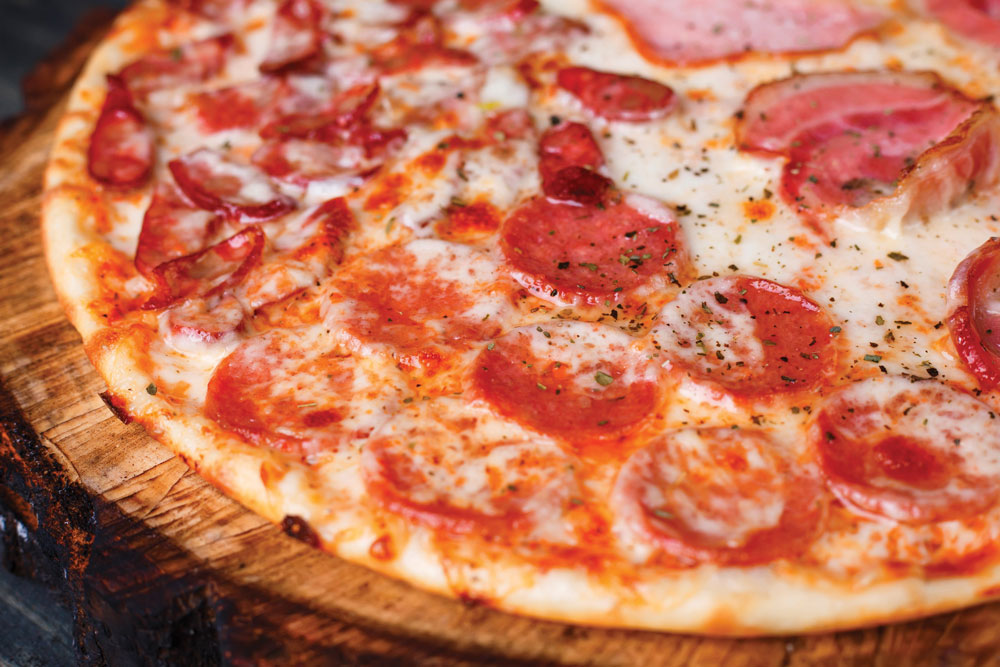The big advantage of par-baked crusts is that you can make them during slow periods for use later in the day. When things get busy and you’re in a rush, these crusts require less time to finish baking than a raw dough skin, so they save time and labor. However, consistency of product is important, so if you use the par-baked approach, you should make all of your pizzas that way!
While your regular pizza dough can be par-baked, you can also make some adjustments to achieve a better par-baked crust. Here are some tips:
1. Adjust the yeast level to about half of the amount you normally use for making your pizzas. This will control pocketing during baking.
2. Include a little sugar or sweet dairy whey to accelerate crust color development. This will also allow for a better bake. Pizzas made on par-baked crusts only need to be cooked long enough to bake the top of the pizza while thoroughly heating and crisping the crust; thus, the final baking time may be 25% to 30% shorter than that for a pizza made on a raw dough skin.
3. Dough used for making par-baked crusts should be well-fermented to help reduce bubble and pocket formation.
4. If possible, allow the formed dough skins to rest/proof for a few minutes between forming and baking to reduce bubble and pocket formation.
5. Always dock the dough skins immediately before baking. This will help in the baking process and provide some control over bubble and pocket formation.
In a par-baked pan-style crust, bubbling and pocketing are seldom an issue. Again, you can use your regular dough or make a specially formulated dough—both work equally well. Give the dough time to final-proof (rise) prior to baking. You’ll need to experiment with baking time and temperature for your oven, but this will be much easier than it is for par-baked thin crusts. Just make sure the crust is fully baked/set before removing it from the oven.
It’s not uncommon to have an uneven or slightly rounded top on par-baked pan crusts, so be sure to de-pan and invert the crusts onto a cooling rack or screen, which will flatten the top of the crust. When final-baking the pan-style pizza, place it back into the same size pan it was par-baked in, along with some oil (peanut oil works well). This will create a fried, crispier effect on the crust. Bake at about 450˚F in a deck oven or 400˚ to 425˚F in an air impingement oven.
Before he passed away in 2020, the late Tom “The Dough Doctor” Lehmann was a regular contributor to PMQ, an industry consultant and the longtime director of bakery assistance for the American Institute of Baking.















